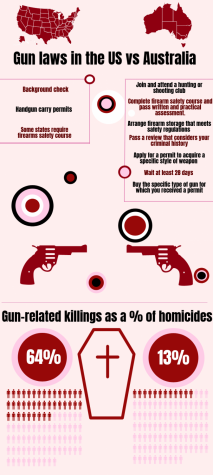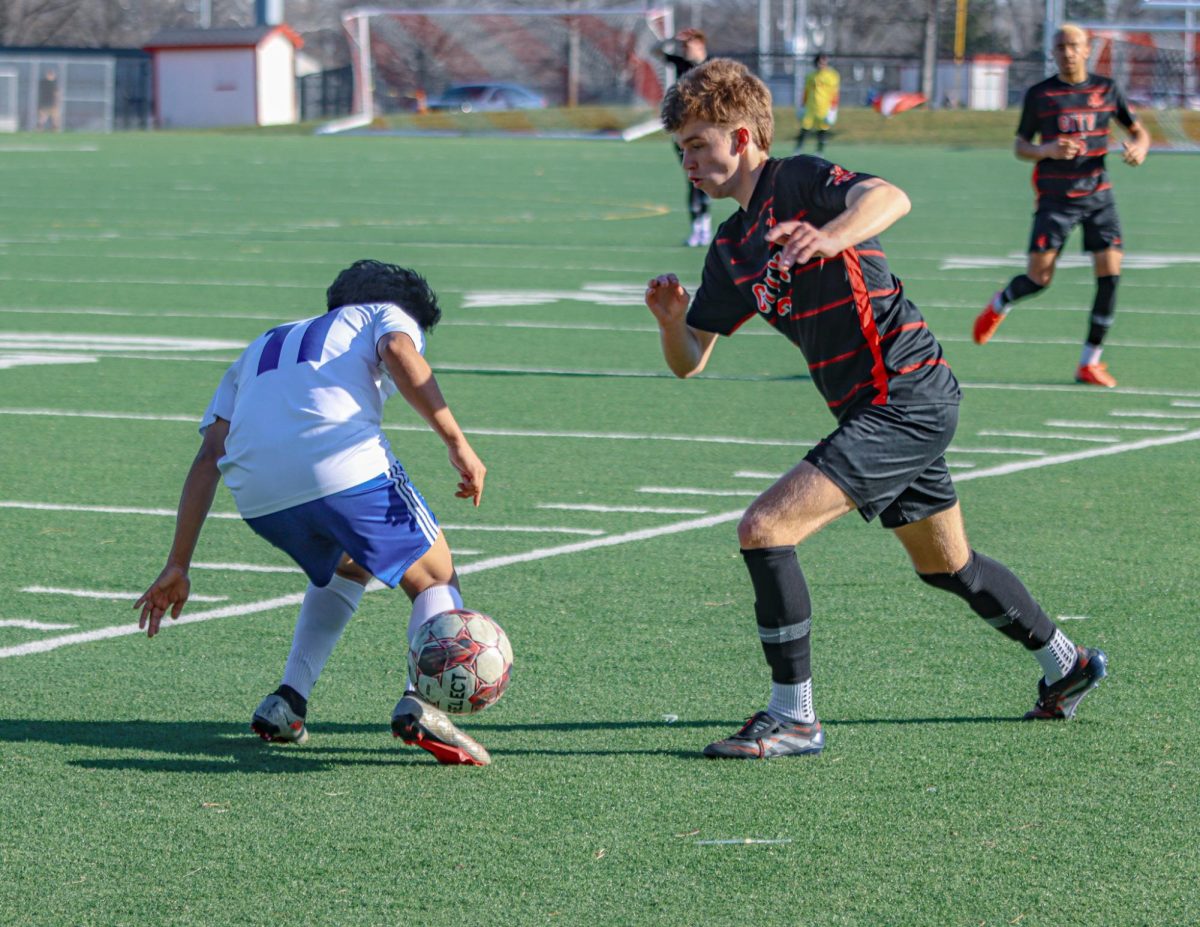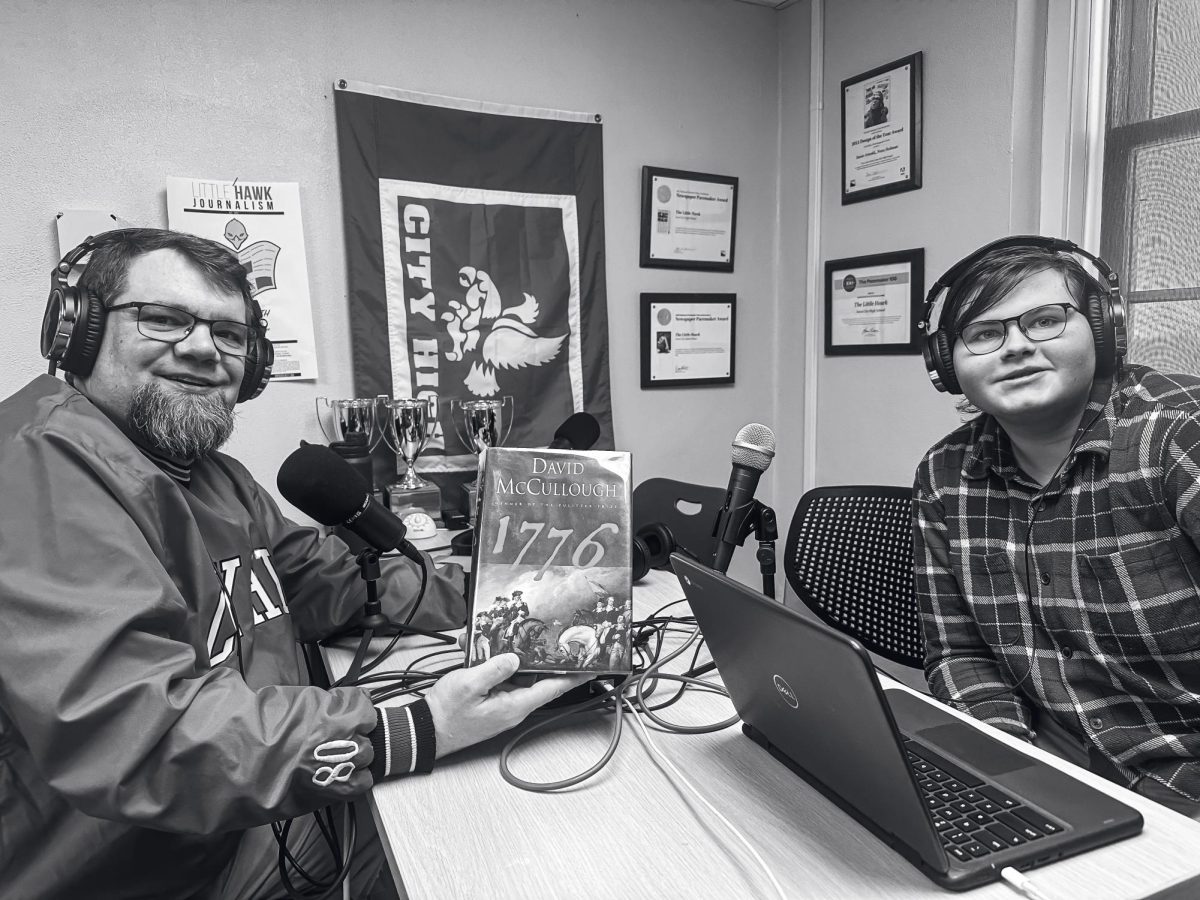The Australian Solution
April 10, 2018
Twenty-five years ago, anyone could buy a gun in Australia. Regulations were loose, and there were no lengthy background checks of consequence. Rampant gun viole nce led to thousands of otherwise avoidable deaths.
nce led to thousands of otherwise avoidable deaths.
It all changed when Martin Bryant opened fire in Port Arthur on April 28th, 1996, killing 35 people and injuring 23 more during one of the deadliest mass shootings in history. The aftereffects of this shooting—once the initial shock, outrage, and grief of the public had faded—eventually resulted in widespread clamor for change. In response to this mass outcry, Australia put preventative measures in place.
The government’s first action was to begin buying back guns from the public in an effort to reduce the possibility of another shooting of any magnitude. The result was that hundreds of thousands of guns were taken off the market. They then employed an extreme vetting process for obtaining one became increasingly difficult. Now, in order to buy a gun in Australia, one must regularly attend a shooting club, complete a course on firearm safety, pass a written test, arrange safe firearm storage, and pass a check for criminal and domestic violence records, restraining orders, and arrest, before one can apply for a permit to acquire a specific type of firearm. Finally, one must complete a waiting period of at least 28 days before one is able to buy the type of gun one is certified to carry.
These new regulations mean that, since the Port Arthur shooting, there has not been a single mass shooting in Australia. In fact, after the passing of the new gun legislation, there is a statistically higher chance of being killed by an animal than by a gun.
In the United States, despite a total of 346 mass shootings and over 15,000 gun deaths over the course of 2017 alone, we have yet to see any regulatory action on guns, as was seen immediately in Australia. In order to obtain a gun in America, one merely has to pass an on-site background check over criminal status. However, a certain loophole, which does not require background checks at gun shows, allows permit holders to bypass even the meager mandate of a background check. In other words, it is frighteningly easy to obtain a gun in this country.
Despite this, our government officials still refuse to offer reasonable gun legislation alternatives to keep us safe, and the 1996 Dickey Amendment mandated that the CDC could not pursue any research into the area of gun violence. As a result, our government is unable to gain any conclusive information on possible causes. risk factors, and effects of gun violence, and as such is unable to ascertain what must be done in order to fix the issues rooted in our society’s gun culture.
When the NRA says that we only need a “good guy with a gun” because there’s “no reasonable evidence that gun control works,” it is just trying to make a profit. The more guns are out on the market for people, the more money they can earn. This agenda prevented the CDC from gathering evidence until recently, on March 21st, when the Dickey Amendment was clarified. Now, the CDC can research gun violence. This is a step in the right direction; officially sanctioned research and confirmed data from the government will increase communication and the possibility that sections and subsections of the Second Amendment will come up for a thought-out, bipartisan, logical debate which might yield results, rather than the shouting match it is right now.
The NRA insists that guns are necessary for citizens to protect themselves, while the organizers of March for Our Lives keep demanding protection from those who would do harm with their guns. We have seen that increasing the number of guns on the market does not work. We have seen that in the increase of mass shootings over the last 20 years. Gun legislation in Australia, as well as in many other nations, has saved hundreds of thousands of lives. These laws can work, and we need to utilize the Australian solution.






























